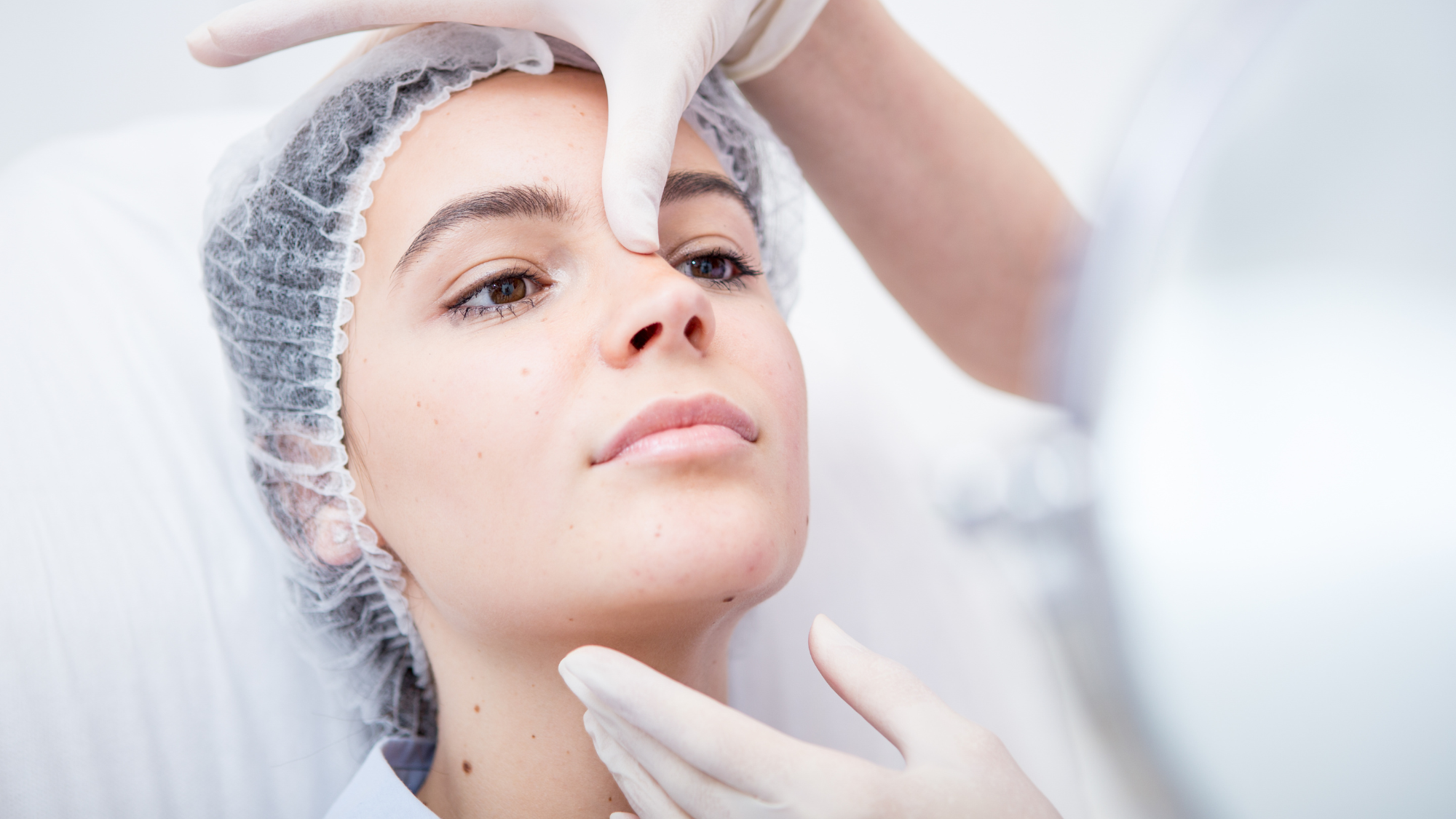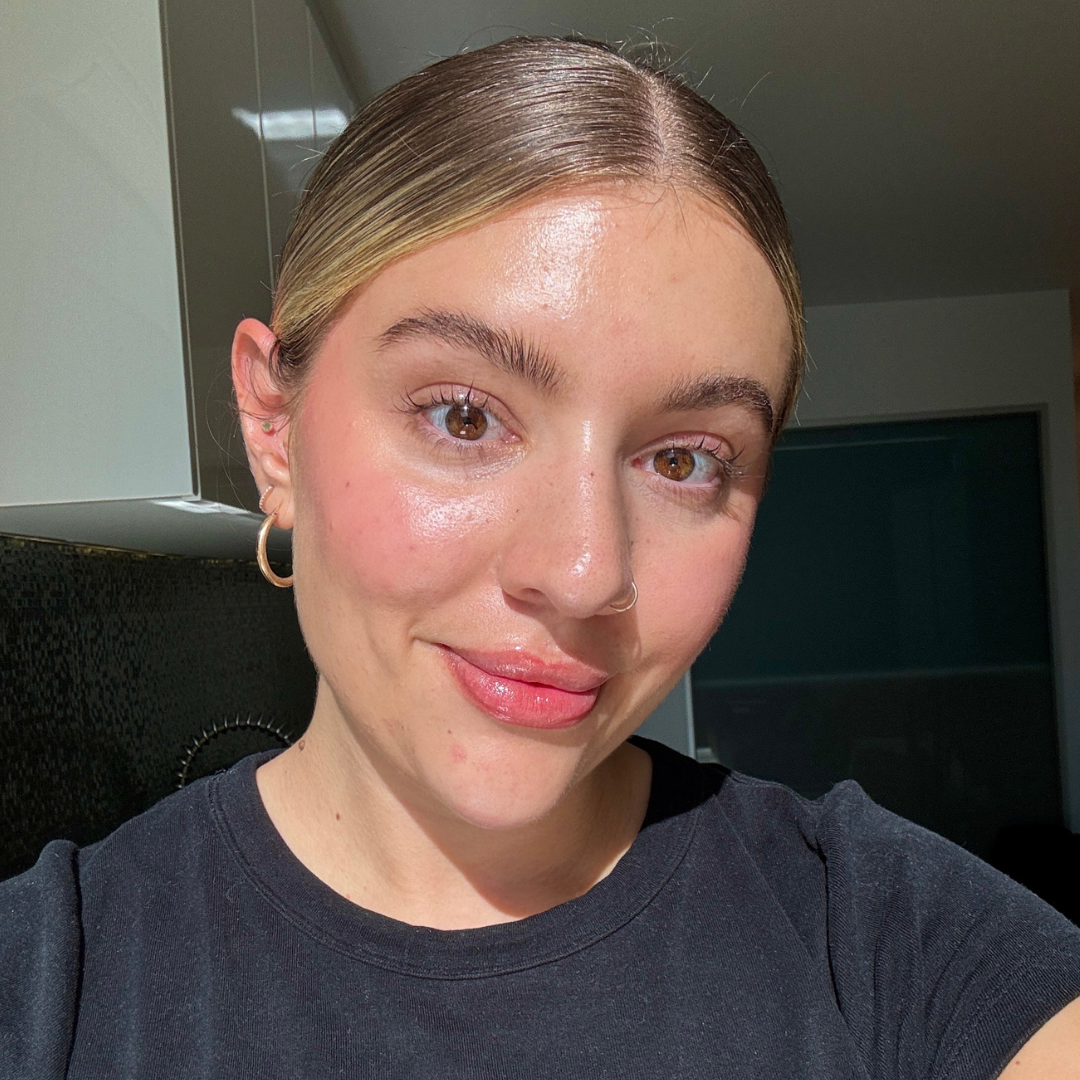The Truth About 'Bone Contouring Filler': Here's What The Trending Treatment Really Entails
The latest frontier in invisible injectables?


The way we view injectable treatments is vastly different from five years ago. Gone are the days when obvious-looking lip enhancements and frozen Botox were actively sought out. Our approach now, in general, is far more refined, and it's about 'invisible' aesthetics and subtle results. So it comes as no surprise that 'bone contouring filler' is trending. But what exactly is it, and does is it really as alarming as it sounds?
What is 'bone contouring filler'?
The first time I heard the phrase 'bone contouring filler,' I was slightly taken aback. It sounds pretty horrifying, and not something I'd ever want to consider. But after a little digging, I soon learnt that it's not how it may appear—and certainly not anything to fear. "Bone contouring filler doesn’t involve altering the bone itself. Instead, dermal filler is placed in supraperiosteal plane - in other words, on top of the bone," explains Dr Emmaline Ashley, cosmetic doctor.
The technique is designed to enhance the facial structure, while defining and sculpting. This is achieved "by adding small amounts of volume in strategic areas such as the temples, cheekbones, chin, or jawline," explains Dr Ashley, who says that with these treatments doctors "can create better definition, balance proportions, and support soft tissues in a way that looks natural." It's about restoring structural support that may have been lost over time through ageing, and creating light and shadow to enhance definition. "Think of it less as 'changing your face' and more as rebuilding the scaffolding so everything looks harmonious and natural," says Dr Sonia Khorana, Cosmetic Doctor and Dermatology Expert.
Its rise in popularity can be credited to changing approaches to injectables, and the results we seek, adds Dr Khorana: "It’s gaining traction because we’re in the middle of a huge shift in aesthetics - away from 'pillow face' or obvious results and towards treatments that are more natural." She adds: "People are realising that facial ageing isn’t just about skin and fat loss - the bone beneath changes too. By subtly restoring that foundation, results look more natural, balanced, and timeless."
A post shared by DR. PARIS ACHARYA | Skin, Facial Aesthetics & Hormones (@drparis.aesthetics)
A photo posted by on
What are the benefits of this treatment?
As mentioned, this approach to injectables can lead to more subtle results, with enhanced "definition and symmetry without looking done," according to Dr Khorana. Its main benefits centre around its ability to restore facial structure and lift indirectly. It's also fairly long-lasting, with Dr Khorana pointing out it's usually around for 18-24 months in some cases. She also states that it can prevent overfilling: "It supports volume in the right places so less filler may be needed in softer tissues (this is person dependent though)."
For these reasons, the bone contouring filler approach is a strong option for those noticing signs of facial ageing (like loss of definition and hollowing at the temples) or for anyone who has a naturally weaker bone structure, "for example, a recessed chin or less prominent jawline where subtle enhancement adds balance," she says.
What are the potential drawbacks?
As with any injectable treatment, there are potential drawbacks, and people it may not be right for. In this case, you must consider that "it won't replace the need for skin or fat restoration in some areas, and a skilled injector is essential, as incorrect placement can cause asymmetry or harshness, especially along the jaw," says Dr Khorana.
Celebrity news, beauty, fashion advice, and fascinating features, delivered straight to your inbox!
The usual risks of any filler also apply, with bruising, swelling, migration and – although rare – vascular occlusion, all a possibility. "As with all fillers, it must be avoided in pregnancy, breastfeeding, or if you have active skin infections, uncontrolled autoimmune conditions. It's also important to have realistic expectations of the results," says Dr Ashley.
To find out more about this treatment and whether it would work for you personally, speak with a trusted, medically trained practitioner and always have an in-person consultation.

Rebecca is a freelance beauty journalist and contributor to Marie Claire. She has written for titles including Refinery29, The Independent, Grazia, Coveteur, Dazed, Stylist, and Glamour. She is also a brand consultant and has worked with the likes of The Inkey List on campaign messaging and branded copy. She’s obsessed with skincare, nail art and fragrance, and outside of beauty, Rebecca likes to travel, watch true crime docs, pet sausage dogs and drink coffee. Rebecca is also passionate about American politics and mental health awareness.